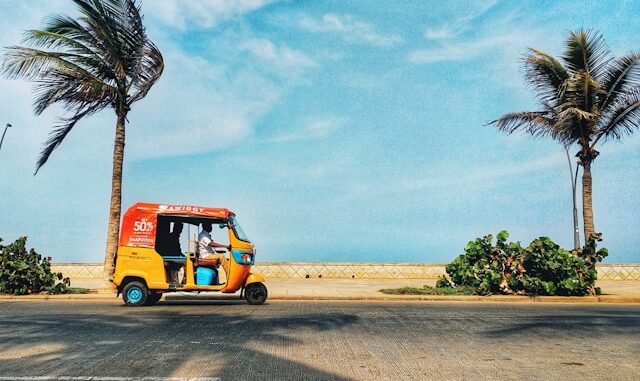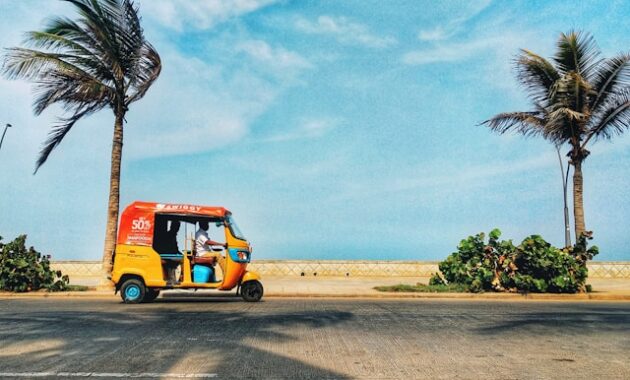
Pondicherry, now officially known as Puducherry, is a coastal haven where two worlds collide—French elegance and Tamil tradition. This unique blend not only defines the architectural beauty of the town but also reflects deeply in its cuisine, art, language, daily life, and community values. From the serene beaches to the vibrant marketplaces, Pondicherry is a living canvas where colonial charm meets South Indian spirit, creating a lifestyle that is both eclectic and harmonious.
A Glimpse into Pondicherry’s Colonial Past
The roots of this cultural amalgamation date back to the 17th century, when the French East India Company established its settlement here. For nearly 300 years, French influence dominated the town’s civic structure, language, and administration. Even today, the French Quarter, or White Town, stands as a proud reminder of this colonial legacy. Wide boulevards, pastel-colored villas, wrought-iron balconies, and tree-lined streets give Pondicherry a distinctly European feel that coexists seamlessly with Tamil India’s vibrance.
Architecture: A Tale of Two Cultures
One of the most captivating features of life in Pondicherry is its dual architectural identity. The town is essentially divided into two: the White Town, with its neoclassical French buildings and colonial mansions, and the Tamil Quarter, known for its courtyards, intricate grillwork, and traditional verandas.
French-style homes typically include:
- Yellow walls with white trimmings
- Arched doors and symmetrical façades
- Wrought-iron gates and trailing bougainvillea
- Spacious courtyards and inner gardens
Tamil-style homes showcase:
- Ornate wooden doors
- Athangudi tiled floors
- Pillared entrances and red-oxide coated roofs
- Central courtyards surrounded by living spaces
The fusion of these two styles has even given birth to a unique architectural hybrid, often visible in restored heritage guesthouses and boutique hotels.
Languages Spoken: A Multilingual Melody
Daily life in Pondicherry dances between languages. Tamil is the most widely spoken language, followed by French and English. Many signs across the town are trilingual, and locals often switch between tongues with ease.
French is taught in schools affiliated with Lycée Français de Pondichéry, and older generations still speak it fluently. Tamil, however, dominates conversations in the marketplaces and temples, keeping the Dravidian culture alive and thriving.

Cuisine: A Gastronomic Harmony
The food scene in Pondicherry is a culinary celebration of East and West. Traditional Tamil dishes like dosa, idli, pongal, sambar, and spicy Chettinad gravies are a staple. These are beautifully complemented by French delicacies like:
- Baguettes and croissants
- Ratatouille and bouillabaisse
- Crêpes, coq au vin, and quiches
- Aged cheeses and wine pairings
Cafés and bakeries in White Town serve artisanal breads and pastries, often run by Franco-Tamil locals or European expatriates. Fusion food is also big here—imagine masala croissants or paneer-stuffed baguettes. The influence of both cultures extends to cooking techniques, ingredient choices, and even the way meals are presented.
Fashion and Lifestyle Choices
Fashion in Pondicherry is a blend of traditional attire and European minimalism. It’s common to see people pairing linen shirts with veshtis or wearing saris with French-style blouses. Cotton and khadi remain popular fabrics due to the coastal climate, and sustainable fashion brands flourish in this conscious community.
Boutique stores and local designers often merge Tamil textile techniques with European tailoring, resulting in pieces that are both ethnic and chic. The Auroville community, located just outside Pondicherry, also influences fashion here with its focus on organic, handmade, and eco-friendly products.
Festivals and Celebrations: A Shared Heritage
Both Tamil and French calendars are honored in Pondicherry’s cultural celebrations. Important festivals include:
- Pongal – A harvest festival celebrated with traditional rituals, kolams, and community feasts.
- Bastille Day – Celebrated on July 14th with parades and French-style fanfare, often led by locals and retired French soldiers.
- Diwali and Navaratri – Celebrated with light displays, dance performances, and religious processions.
- Fête de Pondichéry – A vibrant mix of Tamil and French performances celebrating the town’s spirit.
These celebrations offer a rich experience, where drums meet trumpets, and kolams meet floral French arrangements.
Spiritual Harmony and Community Living
Pondicherry is also a hub of spiritual convergence. With Sri Aurobindo Ashram and the Auroville Universal Township, the town draws seekers from across the globe. These communities emphasize peaceful living, unity, and mindfulness, principles that resonate deeply with both Tamil spiritual philosophy and French existentialism.
Temples dedicated to Ganesha, Shiva, and Vishnu sit alongside quiet Catholic churches and meditation centers. There is mutual respect among communities, and spirituality here is not divided by doctrine but united by purpose.
Arts, Crafts, and Cultural Expression
From Tanjore paintings and Bharatanatyam dance to French watercolor art and theatre, Pondicherry is a living gallery of cultural expression. Art schools here teach both Western fine arts and Indian traditional techniques. Handmade papier-mâché dolls, clay idols, and French handicrafts are popular in local markets.
Workshops often explore cross-cultural art forms, encouraging locals and visitors to participate in pottery, batik, terracotta sculpting, and oil painting. The result is a thriving, inclusive art scene that respects its roots while exploring modernity.
Sustainable Living and Eco-Conscious Mindsets
A growing part of Pondicherry’s identity is its shift toward sustainable and mindful living. Influenced by Auroville’s vision of a utopian, eco-friendly society, many residents adopt organic farming, zero-waste practices, and solar energy solutions.
Farmers’ markets offer fresh, locally grown produce, and restaurants emphasize farm-to-table menus. The town promotes recycling, upcycling, and handmade over mass-produced goods, creating a lifestyle that is as conscious as it is cultured.
Conclusion: A Life of Graceful Coexistence
Pondicherry’s charm lies not in its attempt to become either fully French or purely Tamil, but in how it embraces both identities gracefully. It is a town where you can sip French wine after a visit to a Dravidian temple, where morning yoga in a Tamil courtyard may be followed by brunch at a French café.
This melting pot of cultures, bound by respect, aesthetics, and tradition, offers a lifestyle that is elevated, soulful, and unique—a rare blend of two civilizations in one scenic destination.